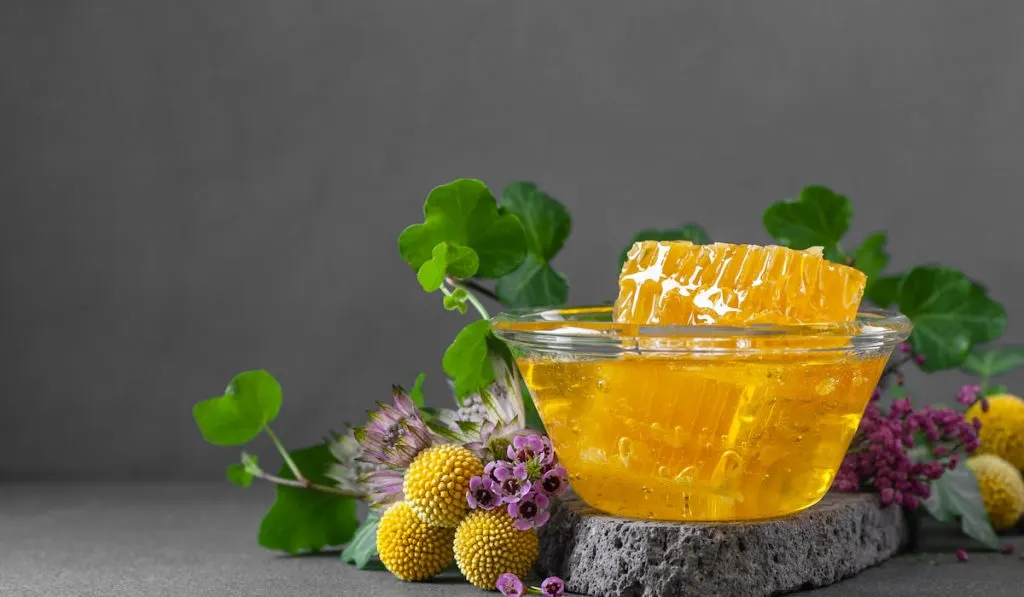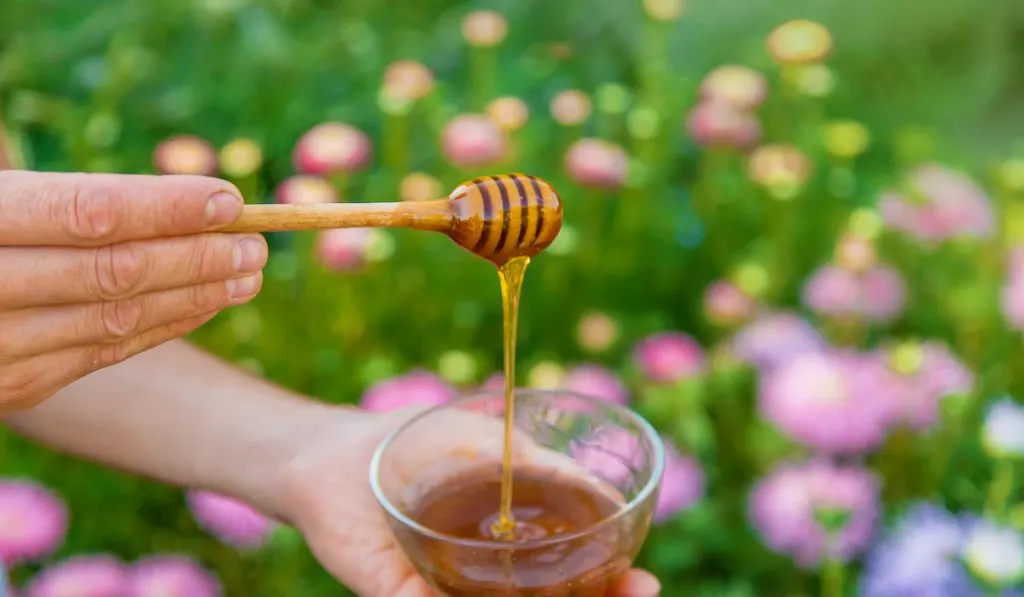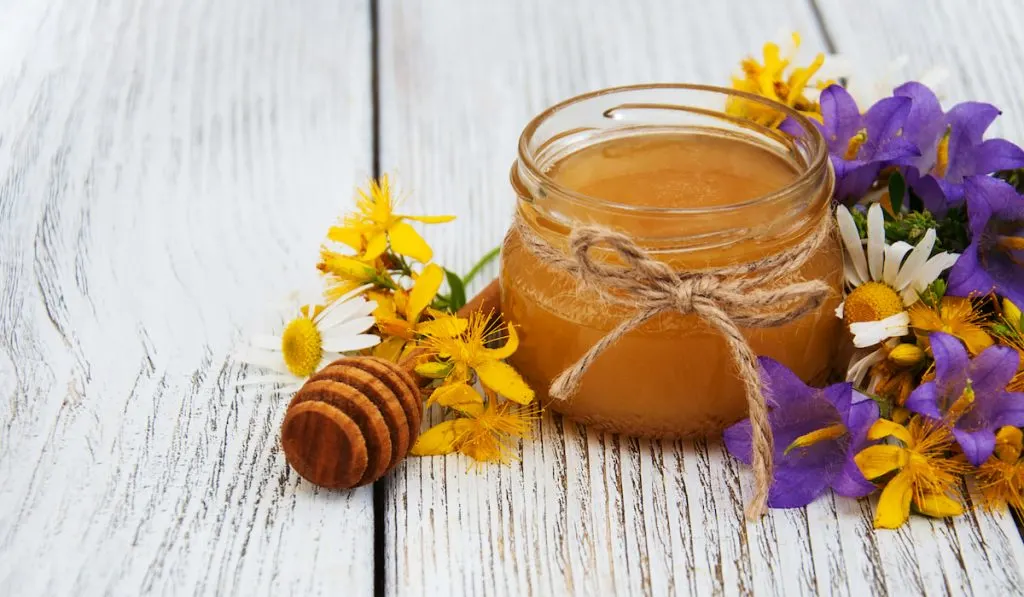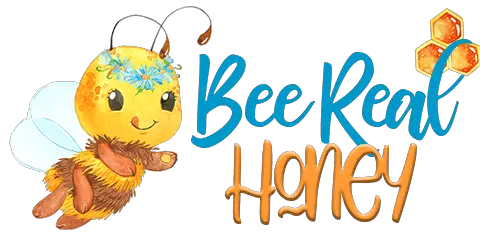*This post may have affiliate links, which means I may receive commissions if you choose to purchase through links I provide (at no extra cost to you). As an Amazon Associate I earn from qualifying purchases. Please read my disclaimer for additional details..
Have you ever heard of wildflower honey before? What about raw honey?
All these different types of honey can be confusing and you may not know which one is best for you.
What is wildflower honey and does it have benefits?
Is wildflower honey the same as raw honey?
Wildflower honey is simply honey made by bees from collecting the pollen and nectar of wildflowers which can be known or unknown.

Wildflower honey has several great benefits.
It has antibacterial and antifungal properties as well as antioxidants.
It even has the ability to prevent some allergies.
Table of Contents
Wildflower Honey: What is it?
Wildflower honey is honey made from wildflowers.
When bee scouts leave their hive, they collect nectar and pollen from different flowers.
When these bees collect nectar and pollen from wildflowers or forest trees, the honey they make is called wildflower honey.
Wildflower honey is usually poly-floral, meaning that bees collect nectar and pollen from multiple types of flowers, not just one species.
Some wildflower sources of pollen and nectar for bees in the production of wildflower honey are:
- Clovers
- Angelica
- Blue Flag
- Fire Pink
- Hoary Vervain
- Dogtooth Violet
- Blackeyed Susan
- Marsh Blue Violet
- Common sunflower
- Common Blue Violet
(Source)
Wildflower, Raw, and Processed Honey Differences
As you already know, wildflower honey is simply honey produced from the nectar collected from wildflowers by bees.
Raw honey, however, is honey directly from the beehive.
This means that very little to no industrial process was carried out on the honey.

Processed honey is honey that was pasteurized and processed by adding a few additives.
While the impurities of raw honey can be filtered out or not, processed honey is mostly filtered, pasteurized, and more processed.
This means that wildflower honey can be sold as raw or processed honey in shops.
Wildflower Honey Benefits
Wildflower honey has some wonderful benefits to humans which include:
1. Prevention of Some Allergies
Remember that wildflower honey is honey gotten from various wildflowers.
Some scientists say that consuming honey from wildflowers can prevent you from developing allergies to those wildflowers.
For example, someone who consumes a clover mono-floral honey (i.e. honey produced from just the clover flower) will not be allergic to clovers.
Wildflower honey, therefore, is a great way to prevent an allergic reaction to different flowers.
2. Antioxidants
According to the University of California-Davis, honey (especially raw honey) contains antioxidants.

Antioxidants are compounds that prevent cell damage and quick aging due to oxidation in your bloodstream.
Antioxidants also help to boost your immunity against certain diseases.
3. Keeps Skin Healthy, Glowing, and Young
You’re probably aware that there are many skincare products with honey.
When honey is directly applied to the skin, it can heal acne scars, tighten skin, prevent or reduce wrinkles, and help your skin to be more healthy in general.
4. Anti-Bacterial and Anti-Fungal Properties
With the low moisture content (<20%), acidity (pH of around 3.5), and other anti-bacterial properties such as hydrogen peroxide, microbes cannot survive in honey.
This means that honey will not spoil quickly and honey will help prevent some infections when consumed often.
5. More Benefits of Wildflower Honey:
Here are some more benefits of wildflower honey:
- Help with digestion
- Soothe sore throats
- Boost the body’s immune system
- Fight some infections that can cause colds
- Fight various damages caused by free radicals that can cause different diseases
More Honey Facts
1. The Taste, Texture, and Color of Wildflower Honey is Influenced by Time and Region.
Since wildflower honey is not mono-floral honey, it does not have a consistent taste, texture, and color.
Plants and trees that produce flowers in spring are different from those that flower in summer and other seasons, so bees collect pollen and nectar from different plants depending on the season.

The population of almost every species of plants and trees is limited to certain geographical zones.
Bees in a continent like Africa will not get nectar and pollen from the same plants that bees in the United States will get pollen and nectar from.
Since the color, texture, and taste of honey slightly depends on the nectar and pollen source, they will differ according to the time and region of collection.
2. Honey Can Last for Many Years
Did you know that honey of about 3000 years of age was discovered in a tomb in Egypt?
Honey has around 18% moisture, is acidic, and has some antibacterial properties.
These properties and the low moisture of honey make honey unsuitable for the growth of bacteria and other harmful microbes.
So long as honey is properly sealed and stored, it will not go bad.
When exposed to air, honey can accumulate moisture, and the addition of moisture can make honey suitable for microbes.
You should store honey in a cool dark place like the pantry or your basement.
If you store honey in a hot place, it will lose its texture and become more watery.
If you store honey in a cold place like a refrigerator, it can crystalize or go bad. You can, however, store honey in a freezer.
3. Methods of Identifying Real Honey
Since there can be fake honey, here are three awesome DIY methods to identify real honey:

- Heat Test: Take a small object like wood or cotton and dip it into honey. If it burns, it is real honey. If it does not burn, it may have been processed with a lot of additives. Real honey is flammable.
- Water Test: Pour your honey into a clear glass of water and notice how it spreads or dissolves in the water. Real honey is denser than water, so it will sink and dissolve slowly. The more additives were added when processing the honey, the quicker honey dissolves in water.
- Paper Test: Honey is <20% moisture, so the regions around honey on a piece of paper should appear dry. Processed honey can make the paper appear wet in less than 10 minutes, but it will take longer for real honey.
Whichever brand you choose to buy, make sure that you buy real honey.
Final Thoughts
Wildflower honey is a honey produced by bees from the nectar and pollen of different wildflowers.
This means that the source of nectar and pollen may or may not be known.
Wildflower honey has many benefits, so you should always have honey in your home.
Be sure the honey you buy is real so that you are able to take advantage of all the benefits it offers.
Resources
- https://www.24mantra.com/blogs/organic-food/lets-understand-the-difference-between-wildflower-honey-vs-processed-honey/
- https://www.healthline.com/health/food-nutrition/top-raw-honey-benefits
- https://www.24mantra.com/blogs/organic-food/6-reasons-why-organic-wildflower-honey-is-good-for-your-health/#
- https://diethive.com/wildflower-honey/
- https://www.livestrong.com/article/250902-what-are-the-benefits-of-wildflower-honey/
